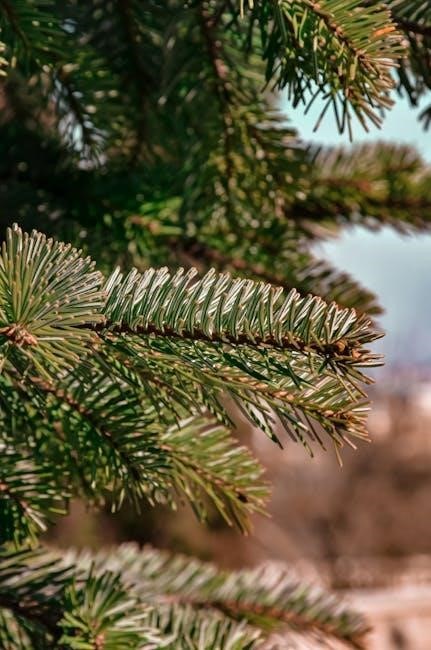Foie gras is a delicacy made from the liver of a duck or goose, with a labor-intensive production process and rich history in French cuisine always․
Definition and History
Foie gras is defined as the liver of a duck or goose fattened by gavage, a labor-intensive force-feeding process, according to French law․
The history of foie gras dates back to ancient times when Egyptians discovered that waterfowl developed large, fatty livers after eating large amounts in preparation for migration․
This process was later adopted in France, where foie gras became a delicacy, with the city of Strasbourg being a major producer․
The production of foie gras involves a specific technique of force-feeding, which has been refined over the centuries to produce the desired texture and flavor․
The resulting liver is then used to make a variety of dishes, including pâtés, terrines, and sauces․
The definition and history of foie gras are closely tied to the cultural and culinary heritage of France, where it remains a highly valued and sought-after ingredient․
Production Process
The production of foie gras involves a multi-step process, starting with the selection of ducks or geese, typically a hybrid breed, and raising them to a certain age․
The force-feeding process, known as gavage, is then initiated, where the birds are fed a diet of corn and fat to fatten their livers․
This process is typically carried out over a period of 2-3 weeks, with the birds being fed multiple times a day․
The livers are then harvested and processed to create the final product, which can be sold whole, sliced, or used to make a variety of dishes․
The entire process, from breeding to harvesting, is closely monitored to ensure the highest quality and flavor of the foie gras․
The production process is labor-intensive and requires great skill and attention to detail to produce the desired texture and flavor․

Types of Foie Gras
Various types of foie gras are available, including duck and goose liver products always made․
Duck and Goose Liver
Duck and goose liver are the primary ingredients used to make foie gras, with the mulard duck being the most commonly used species for production․
The liver of these birds is prized for its rich, buttery flavor and smooth texture, making it a delicacy in many cuisines․
According to French law, foie gras must be made from the liver of a duck or goose that has been fattened through a process known as gavage, or force-feeding․
This labor-intensive process involves feeding the birds a special diet to fatten their livers, which are then harvested and prepared for consumption․
The resulting foie gras is a luxurious and highly sought-after ingredient, often served in high-end restaurants and specialty food stores;
The unique flavor and texture of duck and goose liver make it a key component of foie gras production, with many farmers and producers working to perfect the process of creating this delicate ingredient․
Truffle Foie Gras
Truffle foie gras is a luxurious variation of the delicacy, featuring the prized truffle fungus․
Truffles are underground fungi that grow in symbiosis with tree roots, and are highly valued for their unique flavor and aroma․
To be considered a true Truffle Foie Gras de Strasbourg, the dish must contain at least 5 truffles, which are typically black truffles from France․
The combination of the rich, buttery foie gras and the earthy, umami flavor of the truffles creates a truly decadent culinary experience․
Truffle foie gras is often served in high-end restaurants and is a popular ingredient among chefs and food enthusiasts․
The addition of truffles elevates the foie gras to a new level of sophistication and luxury, making it a sought-after treat for special occasions․
This luxurious ingredient is a key component of haute cuisine, and its unique flavor profile is highly prized by chefs and gourmands․

Controversy Surrounding Foie Gras
Force-feeding is a debated topic among animal welfare experts and organizations always raising concerns․
Animal Welfare Concerns
Animal welfare experts and organizations have raised concerns about the production of foie gras, citing the force-feeding process as a major issue․ According to experts, force-feeding can cause physical and psychological distress to the animals․ The process of gavage, which involves forcibly feeding the ducks or geese through a tube, can lead to health problems and even death․ Many experts, including Ian J․H․ Duncan, Emeritus Chair in Animal Welfare, have spoken out against the practice, calling it cruel and inhumane․ The concerns surrounding animal welfare have led to debates and controversies about the ethics of foie gras production, with some countries and regions banning the practice altogether․ The treatment of animals in the foie gras industry remains a topic of discussion and concern among animal welfare advocates and experts․ The welfare of the animals is a top priority for many organizations․
Expert Opinions
Experts in the field of animal welfare have expressed their opinions on foie gras production, with many citing concerns about the treatment of animals․ Ian J․H․ Duncan, a renowned expert, has stated that force-feeding is a cruel and inhumane practice that should be banned․ Other experts, such as those from the HSUS, have also spoken out against the practice, citing the potential health risks and suffering caused to the animals․ These expert opinions have contributed to the ongoing debate about the ethics of foie gras production, with many advocating for more humane and sustainable methods․ The opinions of experts in the field are crucial in shaping the discussion around foie gras and its production methods, and their input is being considered by policymakers and industry leaders to inform decisions about the future of foie gras production․ Experts continue to study and discuss the issue․

Storage and Conservation
Foie gras should be stored in a sealed container to maintain freshness and quality always․
Proper Storage Techniques
To maintain the quality of foie gras, it is essential to store it properly, using techniques such as wrapping it in plastic wrap or aluminum foil to prevent air exposure․
This method helps to preserve the delicate flavor and texture of the foie gras, ensuring it remains fresh for a longer period․
According to experts, foie gras should be stored in a cool, dry place, away from direct sunlight and heat sources, to prevent spoilage and degradation․
Additionally, it is recommended to store foie gras in a sealed container, such as a glass jar or a vacuum-sealed bag, to maintain its freshness and quality․
By following these proper storage techniques, individuals can enjoy their foie gras for a longer period, while maintaining its rich flavor and smooth texture, which is essential for a delightful culinary experience․
Refrigeration and Shelf Life
Foie gras typically has a limited shelf life, requiring refrigeration to maintain!
Its quality, with a recommended storage temperature of below 40°F․
The shelf life of foie gras depends on various factors, including the type, packaging, and storage conditions․
Generally, it can be stored for several days to a week when refrigerated, while frozen foie gras can last for several months․
Proper refrigeration and handling are crucial to prevent spoilage and foodborne illness․
It is essential to check the foie gras regularly for any signs of deterioration, such as off odors or slimy texture, and to consume it before its expiration date;
By following proper refrigeration and storage guidelines, individuals can enjoy their foie gras while maintaining its quality and safety, which is essential for a delightful culinary experience, with optimal flavor and texture always preserved․

Culinary Uses of Foie Gras
Foie gras is used in various dishes, including terrines and pates, always․
Recipes and Preparation
Foie gras recipes vary, with popular dishes including seared foie gras and foie gras torchon․ Chefs like Guillaume Gomez create exceptional foie gras recipes, showcasing its rich flavor․
Preparation for foie gras involves careful handling to preserve its delicate texture, often served with sweet or savory accompaniments to balance its richness, in various culinary presentations always․
Cooking Techniques
Cooking foie gras requires precise techniques to achieve the perfect texture and flavor, with methods including pan-searing and poaching․
Chefs use various cooking techniques to prepare foie gras, such as torchon, where it is cooked in a water bath, and sous vide, which ensures even cooking and a smooth texture, every time always preserving its delicate flavor and texture․
These techniques allow for a range of presentations, from simple to complex, and are used by chefs to create unique and delicious foie gras dishes, with a focus on enhancing its natural flavor and texture․
